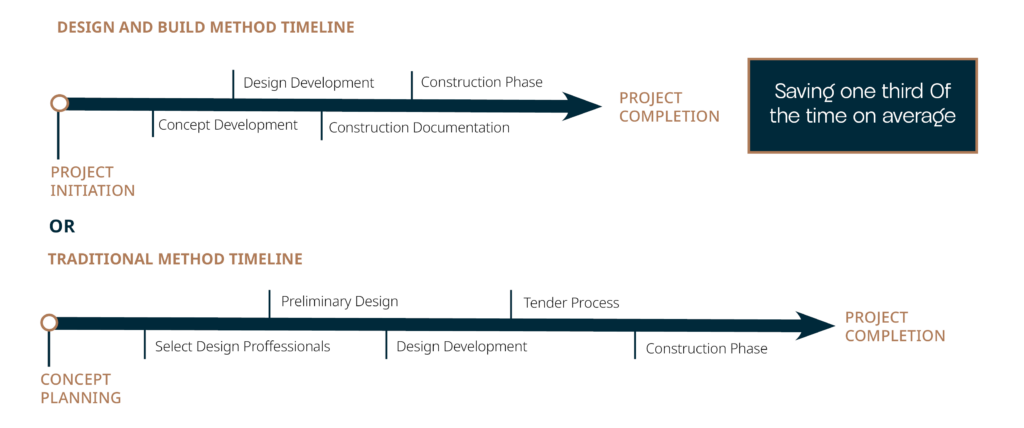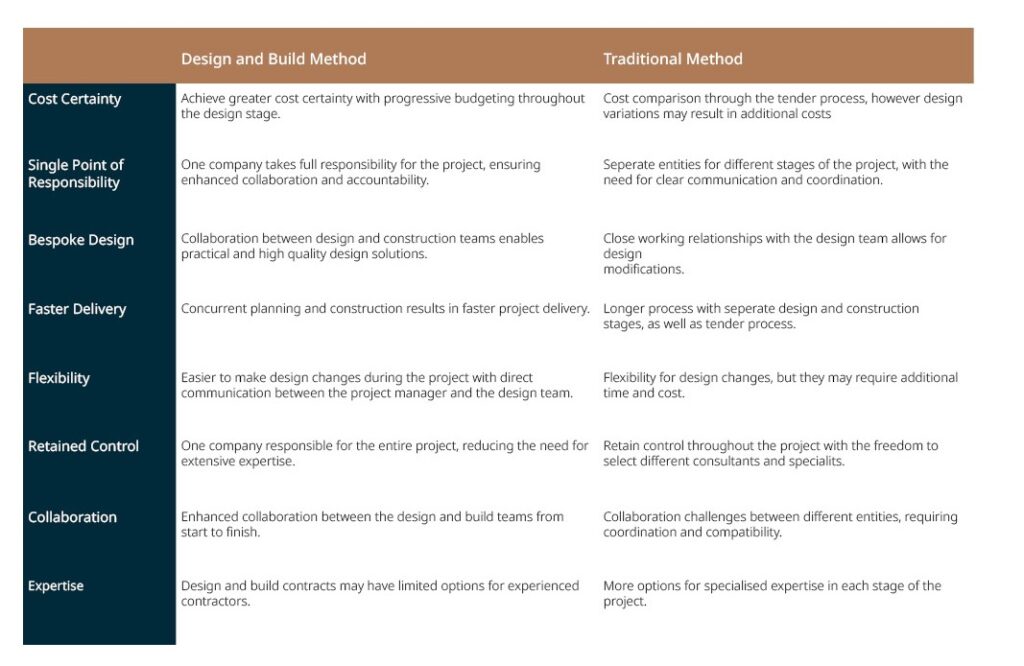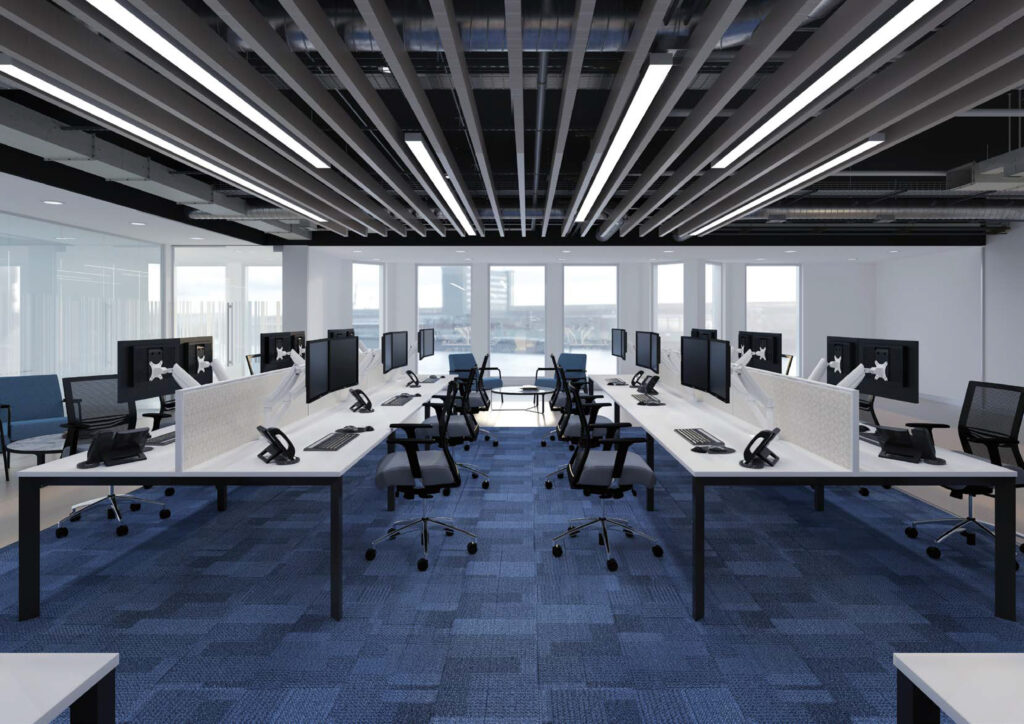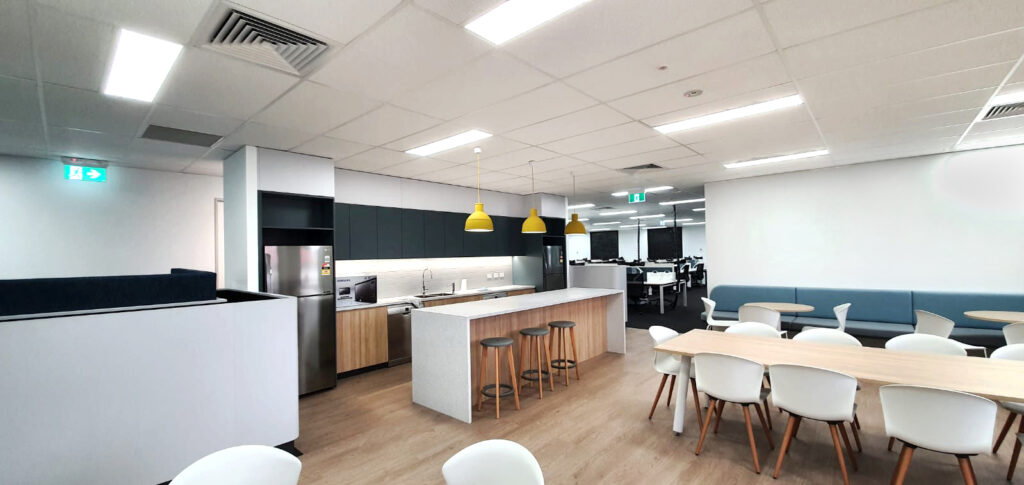As a project manager in Australia, selecting the right approach for your workplace project is crucial to its success. Two commonly used methods are the Design and Build approach and the Traditional procurement method. Each method has its own advantages and considerations, so let’s dive into the details to help you make an informed decision.
Design and Build Method: Streamlined Efficiency and Collaboration
The Design and Build method offers an integrated and collaborative approach to project delivery. In this method, a single entity, often a design and build firm, handles both the design and construction aspects. This streamlined approach brings several benefits:
- Greater Cost Certainty: With the Design and Build approach, you can achieve greater cost certainty. The progressive budgeting throughout the design stage ensures that the project aligns with your initial budget. By working closely with one team from start to finish, you can avoid costly redesigns and variations.
- Single Point of Responsibility: One of the key advantages of Design and Build is having a single point of responsibility. This means that the design and construction teams work together from the beginning, resulting in enhanced collaboration and accountability.
- Bespoke Design and High-Quality Results: The collaboration between the design and construction teams enables practical design solutions that prioritise buildability. The input from the construction team ensures that the designs are not only visually appealing but also achievable economically. This synergy leads to high-quality outcomes that meet your project’s unique requirements.
- Faster Delivery: Time is of the essence, and the Design and Build method excels in delivering projects efficiently. By allowing the contractor to plan the build concurrently with the design process, you can expedite the project timeline. This method eliminates the need for a separate tender process, saving valuable time and accelerating the overall delivery.
Traditional Method: Flexibility and Control
The Traditional fitout procurement method follows a sequential process where different entities handle different stages of the project. It starts with engaging an architect or designer to create the initial concept and design. Once the design is finalised, construction companies are brought in to execute the project. Here are some key considerations:
- Flexibility and Adaptability: The Traditional method allows for flexibility in design changes. With a close working relationship with the design team, you have the opportunity to make modifications as needed. However, it’s important to note that changes may require additional time and cost as they go through the design and approval process.
- Retained Control: With the Traditional method, you retain control throughout the project. You have the freedom to select different professional consultants and specialists based on your specific requirements and preferences.
- Cost and Quality Considerations: The Traditional method provides the opportunity to compare costs and quality through the tender process. You can choose based on the lowest price, highest quality, or a combination that aligns with your project’s needs. However, it’s essential to carefully evaluate quotes and ensure that the chosen contractor can deliver the desired quality within the budget.
- Collaboration Challenges: In the Traditional method, collaboration between different entities may pose challenges. As each party specialises in their respective fields, ensuring compatibility and smooth communication becomes vital for project success.
Design and Build vs. Traditional: A Comparison

To help you visualise the differences, here’s a table comparing the Design and Build approach to the Traditional method:

Ultimately, the decision between Design and Build and the Traditional method should be based on your project’s specific needs, timeline, and budget. Both approaches have their merits, and evaluating them against your project’s objectives will help you make an informed choice.
Don’t navigate the complexities of the Design and Build method or the Traditional approach alone. Contact our team of professionals today to discuss your project requirements, budget, and desired outcomes. We’ll work closely with you to tailor a solution that aligns with your goals and delivers exceptional results.
Remember, the right method can transform your workspace into a vibrant and functional environment that boosts productivity and reflects your organisation’s values. Take the first step towards a successful project by reaching out to Office Vision for experienced advice. Contact us now for a free consultation!


